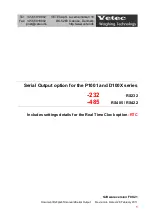
Lucent Technologies Lineage
®
2000 ECS/GPS Battery Plant J85500G-2
Issue 6 May 1999
Engineering, Planning and Ordering 3 - 15
battery strings are added to provide the total reserve capacity of
the battery plant. To supply the necessary reserve, several strings
of small capacity batteries or one or two strings of large capacity
batteries may be connected in parallel.
There are several important considerations in the choice of
battery size versus number of strings, namely,
•
cost,
•
weight and space efficiency,
•
anticipated growth, and
•
system reliability.
Cost: In general, for one vendor’s family of batteries, the cost
per ampere-hour decreases with increasing cell capacity. In
other words, a battery that is twice as big costs less than twice as
much. On the basis of initial material cost, therefore, the number
of strings should be minimized.
Weight and Space Efficiency: Weight density and space
efficiency increase, in general, as battery capacity increases.
There can be significant differences in space efficiency,
however, between different vendors of the same capacity
battery. Floor loading restrictions may limit the potential
compactness of the battery arrangement. Such limitations of the
building structure must be clearly understood before selecting a
battery arrangement.
See Floor plan data under Planning, below, for more
information on floor loading. Applications with space
restrictions such as standard aisle depths may dictate the use of
more strings of smaller batteries.
Anticipated Growth: The growth pattern for the battery plant
may dictate the battery size to simplify expansion. It is usually
easier to engineer and install additional strings of the same
battery type and capacity as those already in place. The growth
in battery capacity is tied to the growth in rectifier capacity,
since both must increase with increasing load current. It is
typically most economical to match an increase in charge
capacity with an increase in battery capacity which can back up
the load supported by the additional rectifiers. Since a fraction of
any added rectifier capacity is needed for recharging added
batteries, the matching incremental change in battery capacity
depends on the desired recharge factor. Since the charge
















































